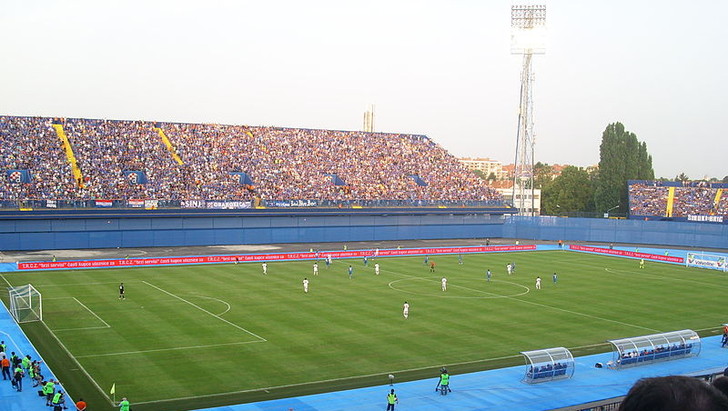Stadion Maksimir: Dinamo Zagreb / Croatia
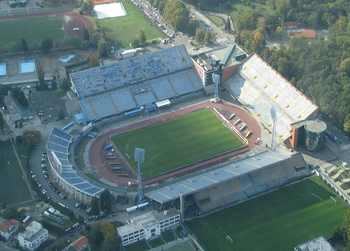
By Suradnik13 (Own work) [CC BY-SA 4.0-3.0-2.5-2.0-1.0], via Wikimedia Commons
Named after the neighbourhood that it was built in, Stadion Maksimir opened its doors for the first time back in 1912. It has undergone numerous changes over the years, not least from an event that occurred in 1941. Members of the fascist government of Croatia addressed students in the stadium and ordered them to be segregated depending on whether they were Serbian or Jewish. The youths disobeyed that instruction and in June of that year attempted to burn the stadium to the ground. The way it currently looks is based on the renovations that were done to the ground in the 1990s.
Though it is normally the home of Dinamo Zagreb, Croatia’s most successful football team, the national side of Croatia also play some games there. They tend to split their time between Maksimir and Poljud Stadium, with the latter able to host roughly three thousand less people than the former. Of course, the Croatia national team as we know it today was only formed in 1990, so it hasn’t had a whole heap of choices regarding where to play. We’ll give you some more information on the formation of the modern day Croatia side further on on this page.
Stats
| Stadion Maksimir Stats | |
|---|---|
| Year Opened | 1912 |
| Capacity | 35123 |
| Average Attendance | 3875 |
| Record Attendance | 64138 (NK Zagreb v NK Osijek (1973)) |
| Pitch Size | 105 x 68 (7140) |
| Owner | City of Zagreb |
| Clubs Hosted | HAŠK, Lokomotiva, Dinamo Zagreb, Croatia national football team |
| Croatia Stats | |
|---|---|
| Year Founded | 1912 |
| Nickname | Vatreni |
| Rivals | Serbia |
| Previous Stadiums | Poljud Stadium |
| Kit | Red & White (Home) / Blue & Black (Away) |
| Team Owner | Croatian FA |
| Record Goalscorer | Davor Šuker (45) |
| Record Appearances | Darijo Srna (134) |
| Dinamo Zagreb Stats | |
|---|---|
| Year Founded | 1945 |
| Nickname | Modri, Plavi |
| Club Mascot | Bulldog |
| Rivals | Hajduk Split, HNK Rijeka |
| Previous Stadiums | Stadion Koturaška |
| Kit | Blue (Home) / Yellow (Away) |
| Shirt Sponsor | PSK |
| Team Owner | Zdravko Mamic |
| Record Goalscorer | Igor Cvitanović (304) |
| Record Appearances | Dražen Ladić (802) |
Stadion Maksimir Photos
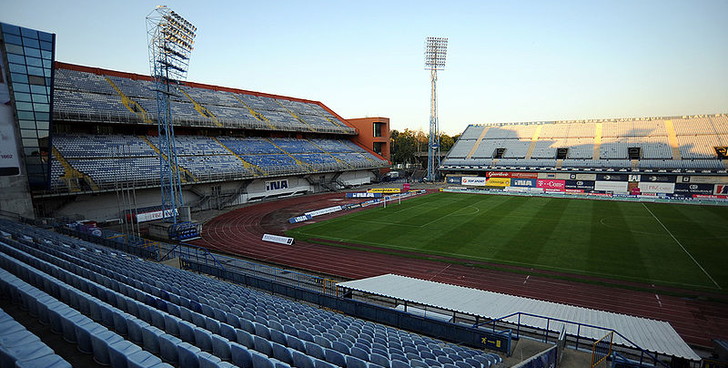
By V&A Dudush (Panoramio) [CC BY 3.0]
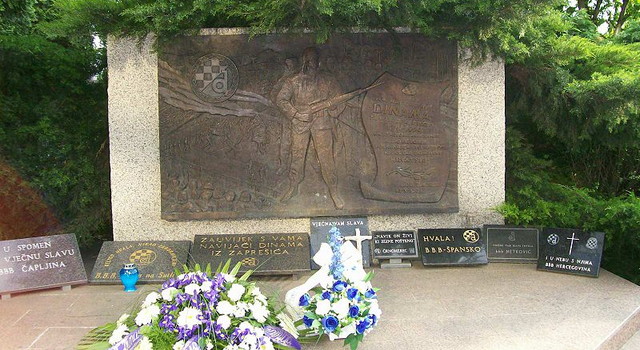
By Suradnik13 (Own work) [CC BY-SA 4.0-3.0-2.5-2.0-1.0]
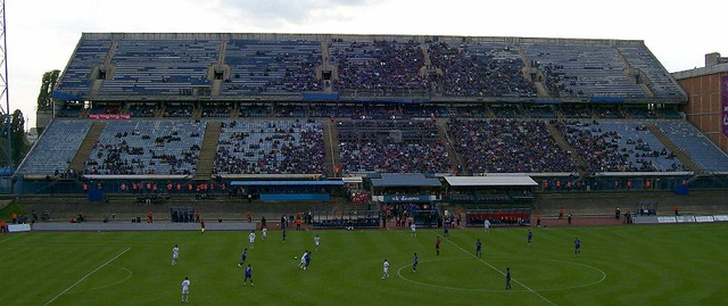
By Suradnik13 (Own work) [CC BY-SA 4.0-3.0-2.5-2.0-1.0]
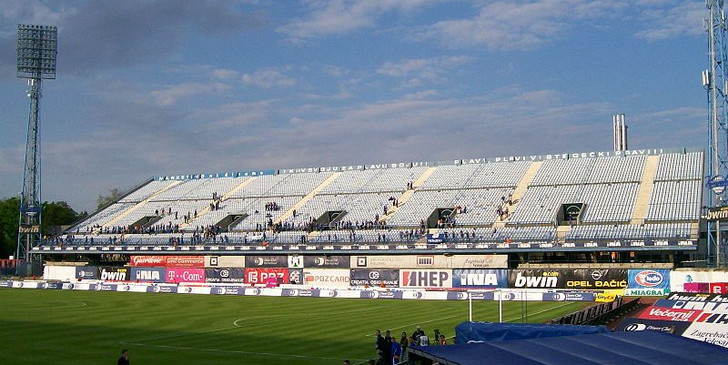
By Suradnik13 (Own work) [CC BY-SA 4.0-3.0-2.5-2.0-1.0]
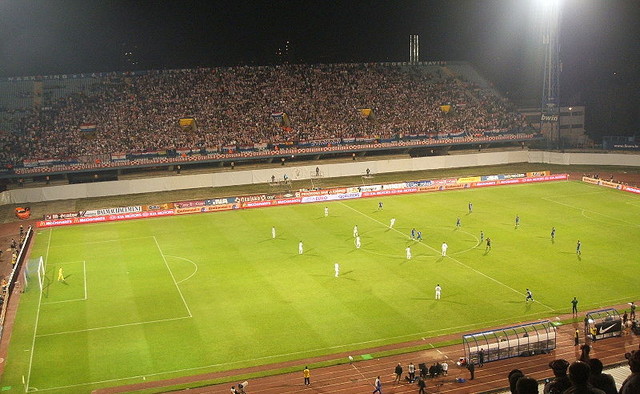
Stadion Maksimir Seating Plan and Where to Sit
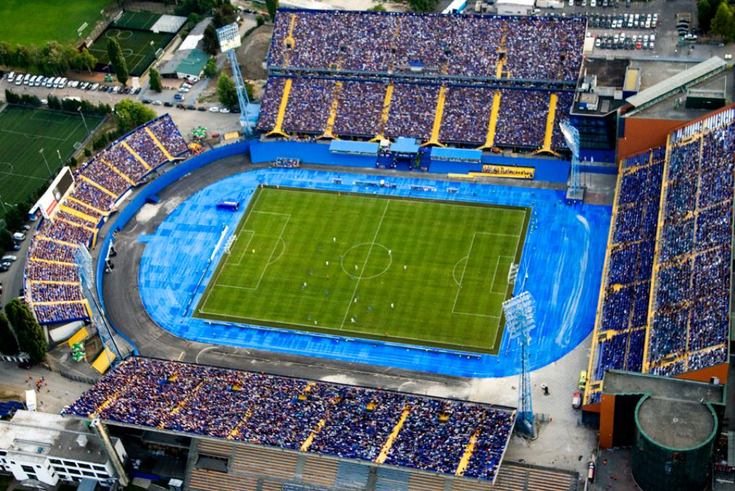
For a stadium that regularly hosts the national side’s games Stadion Maksimir has an interesting design. Built in the ‘English Style’, there is no roof and a large gap between the stands and the pitch meaning you feel mikes away from the action. Here’s some info on each stand:
- North Tribune – Capable of housing 10,000 supporters over two tiers, the North Tribune is actually quite an impressive structure to look at. It’s set behind the Northern goal and has a floodlight either side of the stand.
- East Tribune – Also capable of holding a significant number of people, the East Tribune runs along the side of the pitch and is a single-tier structure.
- South Tribune – The South Tribune is a curved stand that is different in style from the other stands in the ground. Perhaps a nod to the days when there was an athletics track running around the playing surface, this is the smallest section of the stadium.
- West Tribune – This is the main stand of the ground, capable of housing over 11,000 supporters over two tiers. The chief facilities such as the dressing rooms, dugout and players’ tunnel are also to be found here.
Croatia Ticket Prices
International match ticket prices tend to be decided by the governing body of the competition the game is being played in. If you’re hoping to see the Croatia national side play in a game in a competition such as the World Cup then it will be FIFA that will be deciding what you’ll pay. Likewise UEFA will make the decision for European Championship matches. If it’s a friendly then prices will likely be set by the Croatian Football Association.
How To Get Croatia Tickets
The best way to get tickets to see a national side is to contact their Football Association. Big FAs normally have decent websites and Croatia is no exception. If you’re hoping to see the Croatian national side then there’s little point contacting the stadium.
Where to Buy
Dinamo Zagreb Ticket Prices
Zagreb charge different amounts of money depending on where in the ground you’d like to sit. They also alter the amount they ask for if the opposition is likely to be a popular one. There is a strong rivalry with Hajduk Split that is referred to as the Eternal Derby, so prices will be higher when they come to town. Likewise if you’re looking to attend a match in a different competition that merely the Prva HNL then that might cost more too. For the Champions League group stage matches in the 2016-2017 season tickets cost 200 KUNA for the North Tribune, 250 KRUNA for the East Tribune and 300 KUNA for the West Tribune. You can become an club member and get tickets for slightly cheaper if you’d like to.
How To Get Dinamo Zagreb Tickets
As is the case with most top clubs throughout the world in the modern age, the best bet for tickets is to head to the official Dinamo Zagreb website. You can get tickets from the box office at the stadium in the week or so before a game and there is also a ticket office you can call if your Croatian is up to scratch. One thing to bear in mind is that tickets rarely sell-out, so you should be fine as long as you’re not trying to see one of the club’s more popular matches.
Where to Buy
Getting To Stadion Maksimir
Zagreb is the capital of Croatia so there are a number of decent travel options to get there. Here’s some info on reaching the city and the stadium itself:
Train – Taking the train from London to Zagreb will take about nineteen hours. You’ll first head to Paris before shifting on to Mannheim. From there you’ll get the train to München-Pasing and then on again to München Hackerbrücke. From there it’s a long-haul bus to Zagreb itself. From there the stadium isn’t too far away if you like a walk, but the tram might be the best option.
The Zagreb Electric Tram, or ZET, is an excellent service that departs every 5-10 minutes. The closest stop to the ground is Bukovačka and you can get trams numbered 4, 5, 6, 7, 8, 11, 12, 13 and 14.
Bus – If you’re not a fan of trams then you might want to get the bus instead. The 203, 226, 227 and 228 will all take you close to the ground.
Car – Driving in Croatia can be quite fun, so if you’re thinking about driving to the ground then grab yourself a sat-nav and put the address of the stadium into it. That will give you far more accurate instructions than we can.
By Air – Zagreb International Airport, also known as Pleso, is just over ten miles from the city centre. You can get a bus into the centre for about 30 KUNA.
Taxi – A taxi from the main train station to the ground will take just over ten minutes and will probably cost something like 40 KUNA.
Parking Near Stadion Maksimir
There’s only one car park at the ground. It’s small and it’s reserved for special guests on a match day, so you might want to try to find some on-street parking nearby.
Useful Resources
Stadion Maksimir Hotels
Much like with the transport, the fact that Zagreb is the country’s capital means that there are plenty of hotels about. Here are some of the best:
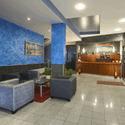
Best Western Hotel Stella - £50+
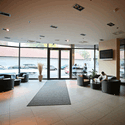
Hotel Slisko - £60+
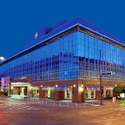
Sheraton Zagreb Hotel - £75+
Pubs and Bars Near Stadion Maksimir
Croatia and Zagreb in particular is well-known for its nightlife. Here are some of the bars and pubs you might want to head to for your pre-match pint:
Oliver Twist
Vivas Bar
The Old Pharmacy Pub
Facilities
The stadium was given something of a facelift in 2011, but at the same time the city were considering moving elsewhere back then so it’s not exactly the best stadium in Croatia. There are no roofs on the stands so you’ll be depending on the elements to be on your side too. It’s not a terrible place to watch a match, but it ain’t the Ritz either. Not that the Ritz can host football matches…
Hospitality
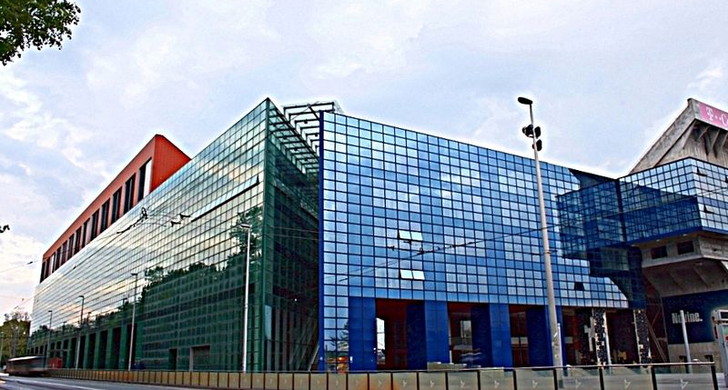
There are a number of executive seating options in the West Tribune at Stadion Maksimir, so that is where you’ll be based if you opt for one of the club’s hospitality packages. There is also a hospitality section in between both tiers of the stands so there is plenty of space for you if you want to watch Dinamo Zagreb in style.
Private Hire
Much like with the hospitality seating, the main areas that would be available for private hire are in the West Tribune. If you’d like some more information about where you can go and what you can do then your best bet is to contact the club directly and let them know what sort of event you’re hoping to host.
Stadium Tours & Museum
A stadium tour is available but you have to email ahead of time to arrange it, so it seems like they run them as and when needed. Tours cost 20,00kn per person unless you are in a group of 15 or more, in which case they will be 10,00kn. You will get to walk around the stadium, visiting first team facilities like the home and away dressing rooms, plus the press room, the tunnel and two trophy rooms.
About Croatia
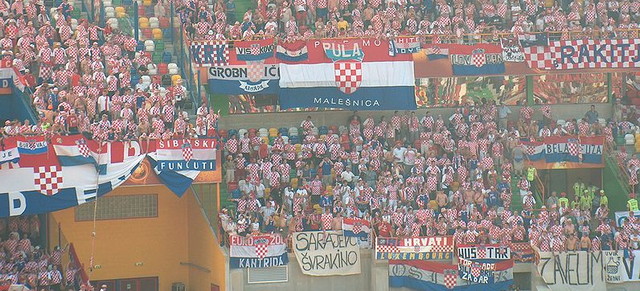
Controlled by the Croatian Football Federation, the Croatia national side has been going since 1912 but came into existence as it is known today in 1990. There have some Croatian sides by name over the years, such as the Banovina of Croatia and Independent State of Croatia that played nearly twenty friendly games between 1940 and 1944. When Croatia become a constituent republic of Yugoslavia in 1945, however, this stopped and the country was not allowed to field a team until the break-up of the Yugoslavian Federal Republic.
Croatia was permitted membership of both FIFA and UEFA by 1993, meaning it could begin competing in their competitions. Their first appearance at an international tournament of note came in 1996 when they qualified for the UEFA European Championships that were being held in England. Since then they have only failed to qualify for two major competitions: The World Cup in 2010 and the Euros in 2000. Though they are yet to win a tournament of note, they came third in the World Cup in 1998 and are often considered to be the best Balkan team playing football today.
About Dinamo Zagreb
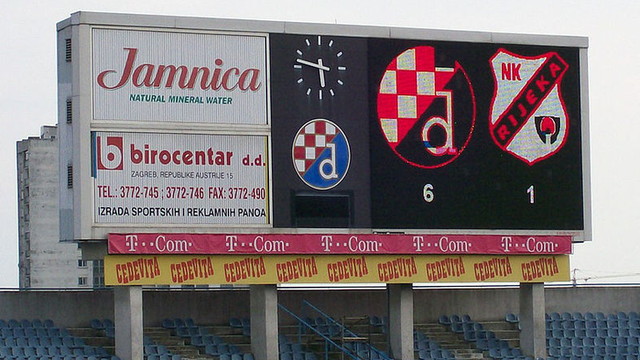
Građanski nogometni klub Dinamo Zagreb, better known as GNK Dinamo Zagreb or even just Dinamo Zagreb sans the GNK, is a football team that was founded in 1945. It is Croatia’s most popular football team, which may or may not have something to do with the fact that it’s also the country’s most successful. At the time of writing they have won the Croatian top-flight eighteen teams, adding fourteen Croatia Football Cups to that tally and another four Croatian Super Cups.
Dinamo were members of the Yugoslav First League between 1946 and 1991, transferring to the Croatian First League when it was founded in 1992. That means that the club has spent its entire existence in the top-flight of football for the country it was based in at any given time. The club has boasted a number of names over the years. During the breakup of Yugoslavia and the subsequent political turmoil the club claimed it’s heritage stretched back further than 1945 to both Građanski Zagreb and HAŠK football clubs. That is why the “Građanski” part of the club’s current name is in place.
Stadion Maksimir History
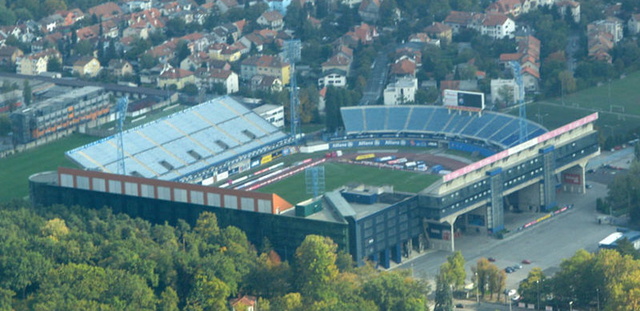
The Maksimir Stadium was first opened on the 5th of May in 1912. Since then it has hosted a number of high-profile football matches. The 1976 European Championships were held in Yugoslavia and, at the time, Croatia was part of the Socialist Federal Republic of Yugoslavia. Consequently the semi-final of the competition between the Netherlands and Czechoslovakia was held at Stadion Maksimir, as was the Netherlands versus Yugoslavia third-place match. When the Summer Universiade was held in Zagreb in 1987, Maksimir was the central venue for the competition.
When Croatia became a separate country and began to play its international matches at Maksimir they went from 1992 until 2008 without losing a match in the stadium. England, who had lost 2-0 to Croatia in the ground in 2006, beat the hosts 4-1 on the tenth of September two years later to end the home side’s magnificent run of remaining unbeaten for thirty competitive games. As well as football the Maksimir has also been used for a number of well-known bands to perform concerts. Dire Straits, David Bowie, U2, Bon Jovi, Madonna and Olly Murs are just some of the acts who have performed there.
Future Developments
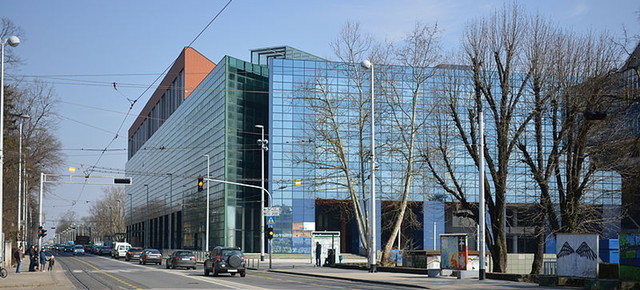
In 2011 the stadium underwent something of a ‘facelift’. All of the seats were replaced, a new drainage system as well as under-soil heating and an automatic watering system were installed, new turf was laid down and the athletic track was also re-jigged. For that reason it’s unlikely that any major changes will be made in the near future, other than repairing the damage done to the East stand in the 2020 earthquake.
Yes, you read that right, an earthquake made the East stand structurally unsafe, so it is closed until it has been sufficiently repaired.

